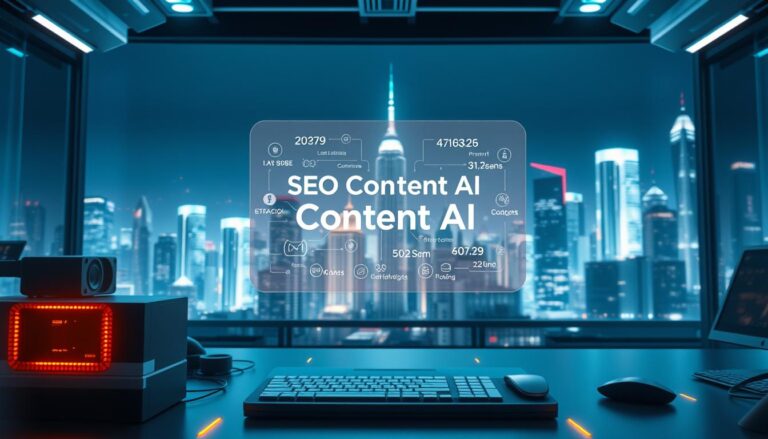E-commerce sites have big challenges online. Being seen is key to success. The site’s technical setup is very important. It helps search engines find and list its pages.
A site that’s well set up makes it easy to find products. This leads to better rankings and more sales. But, many e-commerce sites make big mistakes.
Issues like crawl errors can hurt a site’s ranking. Knowing and fixing these technical SEO problems can help e-commerce sites be more visible online.
Key Takeaways
- Technical SEO is vital for e-commerce site visibility.
- Crawl errors can negatively impact search rankings.
- A well-optimized site improves product discoverability.
- Addressing technical issues enhances online presence.
- E-commerce sites must avoid common technical SEO mistakes.
The Critical Role of Technical SEO in E-commerce Success
Technical SEO is key for e-commerce success. It helps businesses reach their audience. It includes many parts that boost a website’s visibility and drive more leads.
How Technical SEO Impacts E-commerce Conversion Rates
Technical SEO affects e-commerce conversion rates a lot. Page speed is very important. A slow page can make people leave quickly.
Studies say a one-second delay can cut conversions by 7%. Also, good product indexing helps people find what they need. This makes users happy and boosts chances of buying.
The Cost of Poor Technical SEO Implementation
Poor technical SEO can cost a lot. A site with crawl errors or bad mobile design loses a lot of traffic. This means lost sales and money.
Stats show sites with SEO problems can lose 30% of traffic. This can mean thousands of dollars lost. So, fixing technical SEO is very important.
Case Studies: Before and After Technical SEO Improvements
Many e-commerce sites have improved a lot after fixing their SEO. For example, one site made their product pages better and sped up their site. They got 25% more visitors and 15% more sales.
- A fashion site made their site 50% faster and saw 20% more sales.
- An electronics site fixed crawl errors and improved indexing. They got 40% more visitors.
These examples show the benefits of good technical SEO. Improving page speed and product indexing can make a big difference. It can help businesses get more visitors, leads, and sales.
Technical SEO for Ecommerce: Core Principles and Fundamentals
Technical SEO is key for e-commerce sites. It makes them more visible and easier to use. E-commerce sites face special challenges because of their many products and pages.
Key Components That Drive E-commerce Search Performance
Several things help e-commerce sites perform well in search. Site structure, how easy it is for search engines to crawl, and how fast it loads are important. A good site structure helps users and search engines find what they need.
- Proper use of header tags (H1, H2, H3) for product categorization
- Efficient internal linking to facilitate crawling and user navigation
- Optimized product pages with unique and descriptive content
It’s also key that product pages can be crawled and indexed. This means avoiding errors that hurt visibility in search results.

How E-commerce Sites Differ from Standard Websites
E-commerce sites are different from regular websites. They are more dynamic and have more complex products. They often have:
- Big product catalogs that need updates often
- Many product variants, which can cause duplicate content problems
- Dynamic URLs and filters that make crawling harder
Platform-Specific Considerations (Shopify, WooCommerce, Magento)
Each e-commerce platform has its own SEO needs. For example:
| Platform | SEO Considerations |
|---|---|
| Shopify | Using Shopify’s SEO tools, managing duplicate content, and optimizing product pages |
| WooCommerce | Setting up SEO plugins like Yoast SEO, optimizing product pages, and handling product variants |
| Magento | Using Magento’s SEO features, managing URL rewrites, and optimizing category pages |
SEO expert says, “Knowing your e-commerce platform well is key for good SEO.”
“The right SEO approach can make your e-commerce site more visible and boost sales.”
By focusing on these key areas, e-commerce sites can get better at technical SEO. This leads to more visitors and more sales.
Site Architecture Mistakes That Harm E-commerce Rankings
Site architecture is key for e-commerce site rankings. But, common mistakes can hurt your site. A good site structure is important for users and search engines.
Poor URL Structure and Its Impact
A bad URL can confuse users and search engines. This can lower your rankings. URLs should be clear and easy to read.
For example, example.com/product-category/product-name is better than example.com/?product=12345. This makes it easier for search engines to understand your site.
Category Depth Issues and Fixing Them
Category depth is how many clicks it takes to find a product. Too many levels can make it hard for search engines to crawl. To fix this, limit your categories and use faceted navigation well.
| Category Depth | Impact on SEO | Fix |
|---|---|---|
| Too Deep | Harder to crawl and index | Limit categories and subcategories |
| Optimal | Better crawlability and user experience | Use faceted navigation |
Internal Linking Problems and Solutions
Internal linking helps search engines and users find what they need. But, mistakes like inconsistent linking can happen. To fix this, use a consistent linking strategy.
Focus on linking to important product and category pages.
Implementing Breadcrumbs Effectively
Breadcrumbs help users and search engines see your site’s structure. They should be on every page. This makes your site easier to use and crawl.
“Breadcrumbs not only improve the user experience but also help search engines understand the structure of your site, potentially improving your rankings.”
Fixing these site architecture mistakes can boost your rankings. It also makes your site better for users and can increase sales.
Crawlability Issues: Keeping Search Engines Happy
Search engines must crawl e-commerce sites well to index their products. Problems with crawling can cause indexing issues. This can waste crawl budget and lower search engine visibility.
Common Crawl Errors in E-commerce Sites
E-commerce sites face crawl errors like 404 pages and wasted crawl budget. These can be fixed by:
- Regularly checking crawl errors in Google Search Console
- Fixing broken links and redirects
- Limiting crawl of unnecessary pages via
robots.txt
How to Properly Configure robots.txt for Product Pages
Setting up robots.txt right is key for search engines to find important pages. To do this:
- Let search engines crawl main product categories
- Don’t let them crawl duplicate or thin content pages
- Check your
robots.txtfile with Google Search Console

XML Sitemap Best Practices for Large Catalogs
XML sitemaps help search engines find new and updated content in big catalogs. Best practices are:
- Split big sitemaps into smaller ones
- Update sitemaps often for new or changed content
- Submit sitemaps to Google Search Console
Using Log Files to Identify Crawl Problems
Log file analysis shows crawl patterns and issues. It helps find and fix problems like server errors or unnecessary crawling.
Page Speed Optimization: The Need for Speed
Page speed is very important for e-commerce sites. It affects how many people buy things and how well your site ranks in search results. A fast site keeps customers happy and stops them from leaving quickly.
Impact on Conversion Rates and Rankings
Waiting just one second for a page to load can cost 7% in sales. Google also looks at page speed when ranking sites. So, making your site faster is key for keeping customers and getting found online.
Common Speed Bottlenecks
Big images, bad code, and too many HTTP requests slow down e-commerce sites. Finding and fixing these problems is vital. You can make your site faster by shrinking images, making code smaller, and using browser caching.
Tools for Measuring and Improving Page Speed
There are many tools to check and boost page speed. Google PageSpeed Insights, GTmetrix, and Pingdom are some examples. They show how fast your site is and suggest ways to make it faster.
Image Optimization Techniques
Getting your product photos right is crucial for speed. Use tools like TinyPNG or ImageOptim to make images smaller. Also, pick the right image format, like WebP, to speed up your site.
By using these tips, your e-commerce site will load faster. This makes customers happier and can lead to more sales.
Mobile Optimization Failures to Avoid
Mobile devices are now key in online shopping. It’s vital to avoid mistakes in making your site mobile-friendly. A good mobile site lets customers easily find and buy things from your store.
Mobile-First Indexing Requirements for E-commerce
Google now looks at mobile sites first. Your mobile site must have the same stuff as your desktop site. It also needs to be easy for Google to find. Meeting these mobile-first indexing rules is key to keeping your site ranked well.

Responsive Design Best Practices for Product Pages
A responsive design makes your product pages look good on all devices. Use flexible grids and images, and media queries for a smooth experience. Responsive design boosts user engagement and sales.
Mobile Checkout Optimization Steps
Make the mobile checkout easy to avoid losing customers. Simplify the process, make forms easy to fill out, and keep the page secure. Streamlining checkout boosts user experience and sales.
Testing Mobile Usability Across Devices
Test your site on many devices to make sure it’s mobile-friendly. Check on different phones and tablets, and use Google’s Mobile-Friendly Test. Testing and improving your mobile site boosts sales.
Product Indexing Problems and Solutions
E-commerce sites face a big challenge in managing product indexing. It’s key for the right products to show up in search results. This brings in more traffic and sales. But, there are common problems that can get in the way.
Dealing with Out-of-Stock Products Properly
Out-of-stock products can make users unhappy and hurt search rankings. To fix this, sites can use the “noindex” meta tag. This stops search engines from showing out-of-stock items. Or, they can remove these items or mark them as “coming soon.”
Best Practice: Keep an eye on stock levels and adjust indexing to keep users happy.
Handling Product Variants Without Duplicate Content
Product variants, like different sizes or colors, can cause duplicate content problems. Using canonical tags helps show which product page is the main one. This lowers the chance of getting hit with duplicate content penalties.
- Use canonical tags to point to the main product page.
- Use structured data to help search engines get product variations.
Seasonal Product Management Strategies
Seasonal products need a smart plan to get indexed right when they’re in season. This might mean changing how these products are indexed temporarily.
Implementing Proper Indexation Controls
Having good indexation controls is crucial for managing product indexing. This means using meta robots tags and canonical tags. These help search engines know how to index product pages.
“Properly managing product indexing is key to ensuring that e-commerce sites can maximize their visibility in search engine results.”
By using these strategies, e-commerce sites can better manage their product indexing. They can also cut down on duplicate content and boost their search rankings.
Schema Markup Implementation for E-commerce
Schema markup is very important for e-commerce sites. It helps search engines understand product pages better. This way, e-commerce sites can share more info about their products and reviews.
Essential Schema Types for Product Pages
For product pages, some schema types are key. The Product schema is very important. It lets businesses share details like price and reviews. Other types like Review and AggregateRating show what customers think.
Review and Rating Schema Implementation Guide
Reviews and ratings are crucial for e-commerce sites. They help build trust with customers. Businesses can use JSON-LD or Microdata to share this info.
For example, with JSON-LD, a script can be added to product pages. It includes details like the reviewer’s name and rating.
Here’s how to add review schema with JSON-LD:
<script type="application/ld+json">
{
"@context": "https://schema.org/",
"@type": "Review",
"reviewBody": "This product is great!",
"reviewRating": {
"@type": "Rating",
"ratingValue": "5"
},
"author": {
"@type": "Person",
"name": "John Doe"
}
}
</script>
Common Schema Markup Errors and Testing Tools
When using schema markup, errors can happen. These errors stop search engines from understanding the data. Tools like Google’s Rich Results Test and Schema Markup Validator can help find and fix these issues.
Structured Data for E-commerce Categories
Structured data is also useful for category pages. Using schema types like ItemList, businesses can share info about products in a category. This includes names, descriptions, and prices.
Duplicate Content Challenges in E-commerce
E-commerce sites often face duplicate content problems. This can hurt their SEO. Search engines get confused and don’t know which page to index or rank.
Product Description Duplication Issues
Product descriptions are often the same on many sites. This is because they come from the manufacturer. To fix this, make unique and descriptive content for each product page.
Pagination and Filtering Problems
Pagination and filtering can create many versions of the same page. This is a duplicate content problem. Use canonical tags to tell search engines which page to prefer.
Canonical Tag Implementation Best Practices
Canonical tags are key for handling duplicate content. Here are some tips:
- Use absolute URLs
- Specify one canonical URL per page
- Avoid chaining canonical tags
Handling Manufacturer Descriptions
When you have manufacturer descriptions, you can rewrite them. Or, you can use canonical tags to point to the original. This helps avoid duplication and keeps your SEO safe.
| Best Practice | Description | Benefit |
|---|---|---|
| Unique Product Descriptions | Create original content for product pages | Improved SEO rankings |
| Canonical Tags | Specify preferred version of duplicate pages | Reduced duplicate content issues |
| Rewriting Manufacturer Descriptions | Make manufacturer descriptions unique | Avoids duplication |
HTTPS and Security Concerns for Online Stores
As cyber threats grow, HTTPS is key for online stores. HTTPS (Hypertext Transfer Protocol Secure) keeps customer info safe. It also builds trust in online shopping.

SSL Implementation Best Practices
SSL (Secure Sockets Layer) is vital for e-commerce site security. To secure your site, follow these steps:
- Get an SSL certificate from a trusted Certificate Authority (CA).
- Put the SSL certificate on your server right.
- Make sure your site uses HTTPS by default.
- Change all links and resources to HTTPS.
Right SSL setup keeps your site safe. It also makes customers and search engines trust you more. Google says HTTPS is a ranking signal. It’s very important for e-commerce SEO.
Mixed Content Issues and Detection
Mixed content happens when a secure HTTPS page loads content from an insecure HTTP source. This can cause security warnings. It can also hurt your site’s trustworthiness. To find and fix mixed content:
- Use tools like Google Search Console and browser developer tools to spot mixed content.
- Change URLs of insecure resources to HTTPS if you can.
- Use a content security policy (CSP) to catch and stop mixed content.
Security Headers for E-commerce Protection
Security headers are HTTP response headers that boost e-commerce site security. Some important security headers are:
| Header | Description |
|---|---|
| Content-Security-Policy (CSP) | Helps find and stop certain attacks, like Cross-Site Scripting (XSS). |
| Strict-Transport-Security (HSTS) | Makes browsers use HTTPS, lowering man-in-the-middle attack risk. |
| X-Frame-Options | Protects against clickjacking by controlling iframing. |
Trust Signals That Impact SEO
Trust signals show a site is safe and trustworthy. Examples include:
- Trust badges and security seals.
- SSL certificates and HTTPS.
- Clear contact info and physical addresses.
- Customer reviews and ratings.
These trust signals boost customer trust. They also help SEO by lowering bounce rates and improving engagement.
JavaScript SEO Pitfalls for E-commerce Sites
E-commerce sites use JavaScript to make things better for users. But, this can cause big SEO problems if not done right. Search engines like Google are getting better at handling JavaScript sites. E-commerce sites need to watch out for these issues and fix them.
Client-Side Rendering Problems and Solutions
Client-side rendering (CSR) means the browser does most of the work. It’s good for quick updates without reloading the whole page. But, it can make SEO harder because search engines might have trouble finding the content.
To solve this, e-commerce sites can use server-side rendering (SSR) or hybrid rendering. This way, the server does the initial work. It makes it easier for search engines to find and index the content.
JavaScript Framework Considerations for SEO
Choosing the right JavaScript framework is key for SEO. Some frameworks are better for SEO than others. For example, frameworks that support SSR or have SEO tools built-in are good choices.
Frameworks like React and Angular can also be made SEO-friendly. You just need to set them up right and use the right tools.
Testing JavaScript SEO Compatibility
Testing is important to make sure JavaScript isn’t hurting SEO. Tools like Google’s Search Console, Screaming Frog, and Rendertron can help find and fix problems. You need to check how search engines see your site and make sure they can crawl dynamic content.
It’s also important to verify that JavaScript files are indexed correctly.
Dynamic Rendering Options
Dynamic rendering serves a special version of a page to search engines. This is great for e-commerce sites with lots of interactive stuff. But, setting it up right is key to make sure everything works as it should.
| Rendering Method | SEO Impact | User Experience |
|---|---|---|
| Client-Side Rendering | Potential SEO issues due to crawl and index challenges | Dynamic and interactive |
| Server-Side Rendering | Better SEO as content is readily available for search engines | Initial load is faster, but may lack dynamism |
| Dynamic Rendering | Optimized for SEO while maintaining dynamic user experience | Combines the benefits of CSR and SSR |
International SEO Mistakes for E-commerce Businesses
International SEO is key for e-commerce sites wanting to grow worldwide. But, many mistakes can slow them down. They must think about many things that affect their search rankings and how seen they are.
Hreflang Implementation Errors and Fixes
Hreflang tags are very important for international SEO. They tell search engines which language and area a webpage is for. But, mistakes in using these tags can confuse search engines and hurt a site’s ranking.
Some common errors are wrong or missing hreflang tags, not using the x-default tag, and not updating tags when content changes. To fix these, e-commerce sites should check their hreflang tags often and make sure they’re right.
“The hreflang tag is a crucial element in international SEO, as it helps search engines serve the correct language or regional URL to users.”
Geotargeting Configuration Steps
Geotargeting is also very important. It makes a website show up for certain areas. This can be done with country-code domains, subdomains, or subdirectories.
To do geotargeting well, businesses should:
- Use Google Search Console to set a site’s geographic target
- Put hreflang tags right to show language and region
- Think about using ccTLDs for certain countries, if it’s possible
International URL Structure Best Practices
How URLs are set up for international sites matters a lot. Good practices include using URLs that clearly show the language or area they’re for.
Currency and Payment Considerations
When reaching out to different areas, e-commerce sites need to think about money and payment options. Offering local currencies and common payment ways can make users happier and help sell more.
| Region | Preferred Currency | Popular Payment Methods |
|---|---|---|
| Europe | Euro (€) | PayPal, Credit Cards |
| North America | US Dollar ($) | Credit Cards, Apple Pay |
| Asia | Local currencies (e.g., Yen ¥, Yuan ¥) | Alipay, WeChat Pay |
By avoiding common mistakes in international SEO, e-commerce sites can get more seen, attract more visitors, and grow their sales worldwide.
Analytics and Monitoring: Tracking Technical SEO Performance
It’s important to watch how well your e-commerce site works. This helps find and fix problems that might hurt your site’s visibility and sales. To do this, you need to keep an eye on certain key performance indicators (KPIs).
Essential KPIs for E-commerce Technical SEO
Choosing the right KPIs is key to knowing if your technical SEO is working. Important KPIs include crawl rate, index coverage, page speed, and mobile usability. These show how well search engines see your site and where you can get better.
| KPI | Description | Importance |
|---|---|---|
| Crawl Rate | The frequency at which search engines crawl the site. | High |
| Index Coverage | The number of pages indexed by search engines. | High |
| Page Speed | The time it takes for pages to load. | High |
Setting Up Proper Tracking Systems
To keep track of these KPIs, you need the right tools. Google Search Console and Google Analytics are great for this. They give you detailed info on how people use your site and help spot technical problems.
Regular Audit Schedules and Tools
Regular checks are vital for your site’s technical SEO health. Tools like SEMrush and Ahrefs can find issues, track how well your keywords do, and check your backlinks. Regular audits help catch and fix problems fast.
Automated Monitoring Solutions
Automated tools make tracking easier. They can alert you to problems like site downtime, crawl errors, or changes in keyword rankings. This lets you act quickly to avoid any harm.
Conclusion: Implementing a Technical SEO Strategy for Your E-commerce Site
Having a good technical SEO plan is key for e-commerce sites to do well online. It helps them rank better in search engines. This means more people can find and visit their site.
A good plan includes making your site easy to navigate and fast to load. It also means making sure it works well on phones. Fixing issues with product listings and making sure your site doesn’t show the same content twice are also important.
By watching how your site does and making changes, you can keep up with the latest in SEO. This helps your site stay visible and user-friendly. It’s a way to keep your e-commerce site successful over time.
FAQ
What is technical SEO, and why is it crucial for e-commerce sites?
How does page speed impact e-commerce conversion rates?
What are some common crawl errors in e-commerce sites, and how can they be fixed?
How can e-commerce sites handle product variants without creating duplicate content?
What is schema markup, and how can it be implemented for e-commerce product pages?
How can e-commerce sites avoid duplicate content challenges?
Why is HTTPS important for e-commerce sites, and how can it be implemented?
What are some common JavaScript SEO pitfalls for e-commerce sites, and how can they be avoided?
How can e-commerce businesses avoid international SEO mistakes?
What are some essential KPIs for e-commerce technical SEO, and how can they be tracked?
How often should e-commerce sites conduct technical SEO audits?
Related Posts
- Cheap WordPress Hosting With Email Included: Top Picks for 2025
- Best SEO Tools for WordPress in 2025
- PBN Backlinks For Sale
- How to Use Expired Domains for SEO and Backlink Boosts
- Best SEO Tools for Affiliate Marketing in 2025: Optimize, Rank & Earn More
- How to Improve Website SEO and Rank Website on Google
- On-Page Optimization: The Key to Elevating Your Online Presence
- How to Optimize SEO Meta Descriptions







